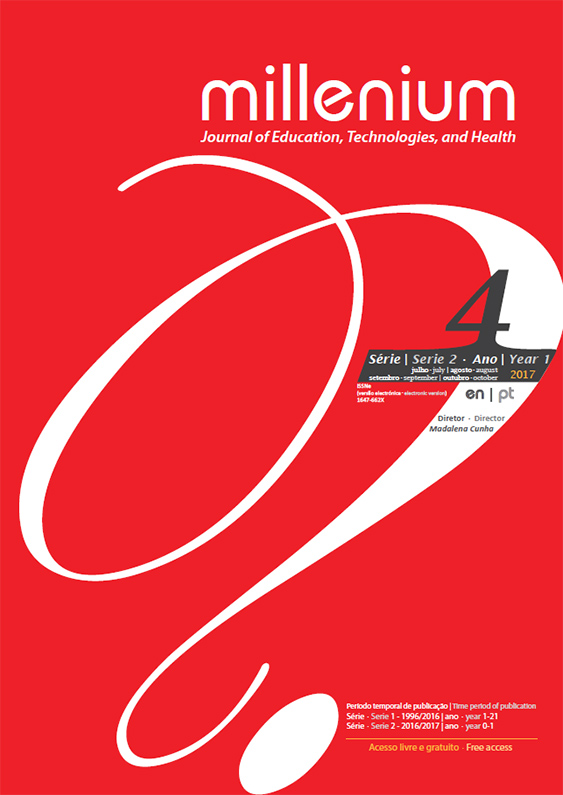Education as a tool to reduce the water footprint of young people
DOI:
https://doi.org/10.29352/mill0204.09.00144Keywords:
Education of Young People, Water Footprint, Consumer’s BehaviourAbstract
Introduction: Due to the global changes, fresh water became scarce in many geographical realities. In this domain, education can play a significant role, contributing to the sustainable water management.
Objectives: Estimate the Water Footprint (WF) of young people, including their direct and indirect water uses. Develop an educational application that aims to exemplify measures which lead to water conservation in their daily activities.
Methods: Two questionnaires. The first one was formulated in order to estimate the average WF of a young person, and the second one to establish the basis of the educational application. Samples included 82 students in the 12 – 15 age range.
Results: The average WF of a student is 3223±830 L/day. The total indirect water use is over 10 times higher than direct use. Food accounts for the major part (84.4 %) of young person’s WF, and in the second place of indirect uses is clothing-related WF (6.4 %). Among analysed food groups, meat has the largest contribution (39.6 %) to the total personal WF. For both genders, high direct water use (264 L/day) is due in large part to long showers.
Conclusions: Young people consume too much fresh water, what suggests the need to improve their behaviour in terms of eating habits, clothing and shower duration.
Downloads
References
Almeida, M., Vieira, P., & Ribeiro, R. (2006). Uso eficiente da água no setor urbano. Série Guias Técnicos 8. Laboratório Nacional de Engenharia Civil Lisboa, Portugal. Benito, P., Mudgal, S., Dias D., Jean- Baptiste, V., Kong M., Inman, D., & Muro, M. (2009). Water Efficiency Standards: final report. Paris, Bio Intelligence Service and Cranfield University, Report for European Commission, (DG Environment). Retrieved from: http://ec.europa.eu/environment/water/quantity/pdf/Water%20efficiency%20standards_Study2009.pdf Gephart, J. A., Pace, M. L., & D’Odorico, P. (2014). Freshwater savings from marine protein consumption. Environmental Research Letters, 9(1), 1-8. http://doi.org/10.1088/1748-9326/9/1/014005 Hoekstra, A. Y., & Mekonnen, M. M. (2012). The water footprint of humanity. Proceedings of the National Academy of Sciences of the United States of America, 109(9), 3232 – 3237. http://doi.org/10.1073/pnas.1109936109 Hoekstra, A. Y. (2013). The Water Footprint of Modern Consumer Society. Abington, Oxon, UK: Routledge. Hoekstra, A. Y. (2014). The hidden water resource use behind meat and dairy. Animal frontiers, 2(2), 3-8. http://doi.org/10.2527/af.2012-0038 Howard, G., & Bartram, J. (2003). Domestic Water Quantity, Service, Level and Health. Geneva: World Health Organization. Retrieved from: http://apps.who.int/iris/bitstream/10665/67884/1/WHO_SDE_WSH_03.02.pdf Leeuw, A., Valois, P., & Seixas, R. (2014). Understanding High School Students’ Attitude, Social Norm, Perceived Control and Beliefs to Develop Educational Interventions on Sustainable Development. Procedia - Social and Behavioural Sciences, 143, 1200 – 1209. http://doi.org/10.1016/j.sbspro.2014.08.160 Mekonnen, M.M., & Hoekstra, A. Y. (2010a). The green, blue and grey water footprint of crops and derived crops products. In Value of Water Research Report Series nº 47: Vol.2, Delft, UNESCO-IHE Institute for Water Education. Retrieved from: https://ris.utwente.nl/ws/portalfiles/portal/6453584 Mekonnen, M.M., & Hoekstra, A.Y. (2010b). The green, blue and grey water footprint of farm animals and animal products. In Value of Water Research Report Series No. 48: Vol. 1, Delft, UNESCO-IHE, Instituto for Water Education. Retrieved from: https://ris.utwente.nl/ws/portalfiles/portal/6453582 Mekonnen, M.M., & Hoekstra, A.Y. (2012). A Global Assessment of the Water Footprint of Farm Animal Products. Ecosystems, 15, 401–415. http://doi.org/10.1007/s10021-011-9517-8 Mekonnen, M.M., & Hoekstra, A. Y. (2016). Four billion people facing severe water scarcity. Science Advances, 2(2), e1500323. http://doi.org/10.1126/sciadv.1500323 Solanez, M., & Gonzalez -Villarreal, F. (1999). The Dublin Principles for Water as Reflected in a Comparative Assessment of Institutional and Legal Arrangements for Integrated Water Resources Management. Stockholm: Global Water Partnership/Swedish International Development Cooperation. Background Paper No 3. Retrieved from: http://www.protos.ngo/en/dublin-principles-water-reflected-comparative-assessment-institutional-and-legal-arrangements Stern, P.C. (2000). Toward a Coherent Theory of Environmentally Significant Behaviour. Journal of Social Issues, 56 (3), 407–424. http://doi.org/10.1111/0022-4537.00175 The Water Footprint Network: Resources: Product gallery. Retrieved from http://waterfootprint.org/en/ United Nations Conference on Environment & Development, Rio de Janeiro, Brasil (1992). Agenda 21: programme of action for sustainable development; Rio Declaration on Environment and Development; Statement of Forest Principles: the final text of agreements negotiated by governments at the United Nations Conference on Environment and Development (UNCED), 3-14 June 1992, Rio de Janeiro, Brasil. New York: United Nations Division for Sustainable Development. Retrieved from https://sustainabledevelopment.un.org/content/documents/Agenda21.pdf United Nations Department of Economic and Social Affairs, Population Division (2015). World Population Prospects: The 2015 Revision, Key Findings and Advance Tables. Working Paper No. ESA/P/WP.24. New York: United Nations. Retrieved from: https://esa.un.org/unpd/wpp/publications/files/key_findings_wpp_2015.pdf
United Nations Development Programme (2013). Human Development Report. The Rise of the South: Human Progress in a Diverse World. New York: United Nations Development Programme. Retrieved from: http://hdr.undp.org/sites/default/files/reports/14/hdr2013_en_complete.pdf Van Oel, P.R., & Hoekstra, A.Y. (2010). The green and blue water footprint of paper products: methodological considerations and quantification. In Value of Water Research Report Series Nº. 46, Delft, UNESCO-IHE, Instituto for Water Education. Acedido em https://ris.utwente.nl/ws/files/5146588/IHE-46_2010.pdf
Downloads
Published
How to Cite
Issue
Section
License
Authors who submit proposals for this journal agree to the following terms:
a) Articles are published under the Licença Creative Commons (CC BY 4.0), in full open-access, without any cost or fees of any kind to the author or the reader;
b) The authors retain copyright and grant the journal right of first publication, allowing the free sharing of work, provided it is correctly attributed the authorship and initial publication in this journal;
c) The authors are permitted to take on additional contracts separately for non-exclusive distribution of the version of the work published in this journal (eg, post it to an institutional repository or as a book), with an acknowledgment of its initial publication in this journal;
d) Authors are permitted and encouraged to publish and distribute their work online (eg, in institutional repositories or on their website) as it can lead to productive exchanges, as well as increase the impact and citation of published work
Documents required for submission
Article template (Editable format)





